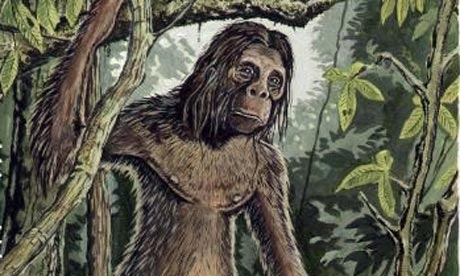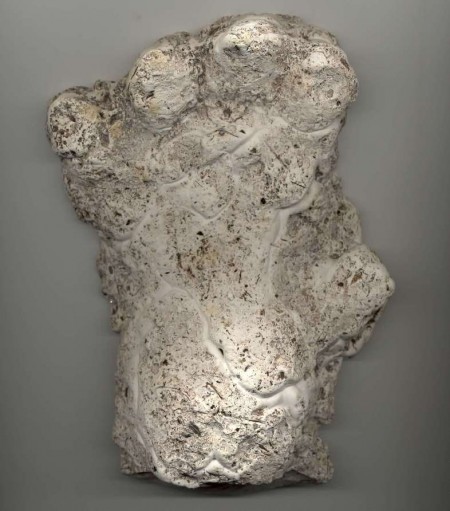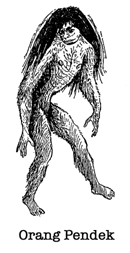Forest Rangers in Sumatra have sighted forest dwelling “pygmys” they report as being only 20 inches tall. There are now many people wondering if these unknown people are the source of the Ourang Pendek legend.
orang

From Cryptozoo News
Rangers patrolling the Way Kambas National Park (TNWK) in Lampung have reported sighting dozens of pygmies in a number of areas across the park. They are being described as pygmies with dreadlocks, being only 20 inches tall and naked.“A number of rangers claim the pygmies grow their dreadlocks down to their waist. The first sighting by the rangers was on March 17 at 6:40 p.m. local time. Apparently, many fruit trees, such as banana, guava and dragon fruit, are grown in the NTF plantation area. If the pygmies like fruit, they might have entered the plantation for food. We will try to anticipate the situation with the help of local residents and PT NTF employees. If they [local workers] come across the pygmies, they should not harm them,” said TNWK spokesman Sukatmoko.Sukatmoko said that based on information conveyed by forest rangers, the group of pygmies consisted of around 15 individuals. When the rangers spotted them, the pygmies, believed to be an isolated group of people, were walking through a swamp.
The rangers monitored their presence for around 15 minutes from a distance of around 35 meters. When the rangers were about to approach them, they immediately hid behind trees and vanished. They ran very fast,” said Sukatmoko.
The pygmies were seen again March 20, by the rangers, but further away and for a shorter time.Sukatmoko said his office was unsure whether the pygmies had always lived in TNWK, or whether they were newcomers from other islands. To record their presence, the TNWK center has installed surveillance cameras in the forest.“We can record pictures of the pygmies at night. After it’s proven they exist, we will immediately inform the Forestry Ministry, or even the President. We believe they really exist in TNWK. We’re making strenuous efforts to find them. In the event that we do, we hope the government protects them. Our rangers have seen them with their own eyes, but have yet to take pictures of them,” said Sukatmoko.
About the Orang Pendek from Wikipedia
While Orang Pendek or similar animals have historically been reported throughout Sumatra and Southeast Asia, recent sightings have occurred largely within the Kerinci regency of central Sumatra and especially within the borders of Taman Nasional Kerinci Seblat (Kerinci Seblat National Park) (TNKS). The park, 2° south of the equator, is located within the Bukit Barisan mountain range and features some of the most remote primary rainforest in the world. Habitat types within the park include lowland dipterocarp rainforest, montane forests, and volcanic alpine formations on Mt. Kerinci, the second highest peak in Indonesia. Because of its inaccessibility, the park has been largely spared from the rampant logging occurring throughout Sumatra and provides one of the last homes for the endangered Sumatran Tiger.
Like their larger cousin, Bigfoot, the Orang Pendek are known largely from anecdotal evidence and footprints.

Orang Pendek have as long a presence in the local legend as Sasquatch have among Native Americans, or Yeti among the people of the Himalya, and so on around the world. Leading scientific theory proposes that the relatively recently discovered “hobbits” called homo florensiensis. Whether this new sighting proves out to be a relict homo florensiensis or some other race or species, if it should be confirmed it will certainly shake up our understanding of our own history as a species and how species can survive in isolation in this world we take for granted as “explored” giving renewed hope to the existence of other well known cryptids. I only hope that protections are put in place that truly preserve these creatures and their environment rather than have them become exhibits in zoos and tourism motivated “nature preserves.”
10 comments




